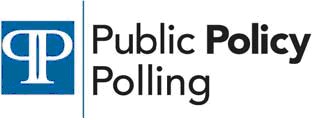To try to answer this question I looked back at the polling I could find from late 2007 on the 2008 Senate contests:
| State | Late 2007 Polling | Final Result | Diffference |
| | Begich 47-41 | Begich 48-47 | 5 |
| | Schaffer 42-41 | Udall 53-43 | 11 |
| | Landrieu 46-42 | Landrieu 52-46 | 2 |
| | Wicker 47-39 | Wicker 55-45 | 2 |
| | Coleman 48-44 | Franken 42-42 | 4 |
| | Shaheen 53-42 | Shaheen 52-45 | 4 |
| | Udall 54-40 | Udall 61-39 | 8 |
| | Dole 51-39 | Hagan 53-44 | 21 |
| | Smith 48-39 | Merkley 49-46 | 12 |
| | Warner 57-35 | Warner 65-34 | 9 |
In seven out of ten of the races the late 2007 polls actually gave a decently good indication of where the races ended up, even if the margins were off.
The biggest exceptions were North Carolina and Oregon and those two districts share a common thread: incumbents with somewhat iffy approval ratings whose challengers weren't very well known statewide yet. The political conditions were right for Elizabeth Dole and Gordon Smith to lose but voters didn't know Kay Hagan or Jeff Merkley yet- the polls in those states changed significantly over the course of the summer when they went on tv.
I think that trend is a little worrisome for some Democrats who have been polling mediocre against opponents who aren't very well known- Blanche Lincoln and Harry Reid in particular. If the political climate doesn't get turned around they could end up being creamed when voters who don't like them become more familiar with the alternatives- so long as those alternatives run solid campaigns, which is certainly not a given.
In races where both candidates were already pretty well known the 2007 polls gave a pretty good picture of where the races ended up. Mississippi, New Hampshire, New Mexico, and Virginia all showed one of the candidates already holding a clear lead and those leads held up right on through November 2008. Alaska and Minnesota were within the margin of error and they stayed within it- past election day to some extent!
What does that mean for this year? In places like Pennsylvania, Missouri, and maybe Delaware where the races are close and the candidates are pretty well known we can probably expect these to stay highly competitive all the way through 2010. In North Dakota Byron Dorgan may have quite a mountain to climb if John Hoeven does end up getting into the race.
These polls are less helpful in showing us where Ohio, Kentucky, New Hampshire, and Colorado might end up because those are all races where none of the candidates except maybe Paul Hodes or Dan Mongiardo is particularly well known and there weren't a lot of 2008 Senate contests that fit that description.
So the answer to my ultimate question of how meaningful the polls are now? Depends on the race to some extent and how familiar voters are with the individual candidates. But they certainly have some utility.




No comments:
Post a Comment